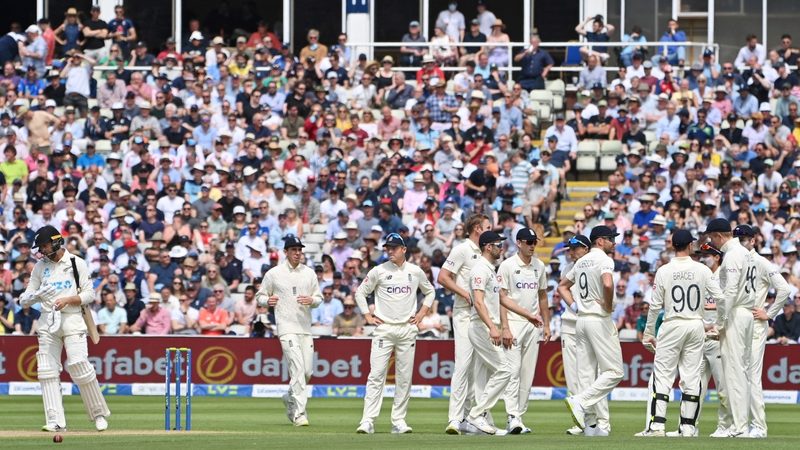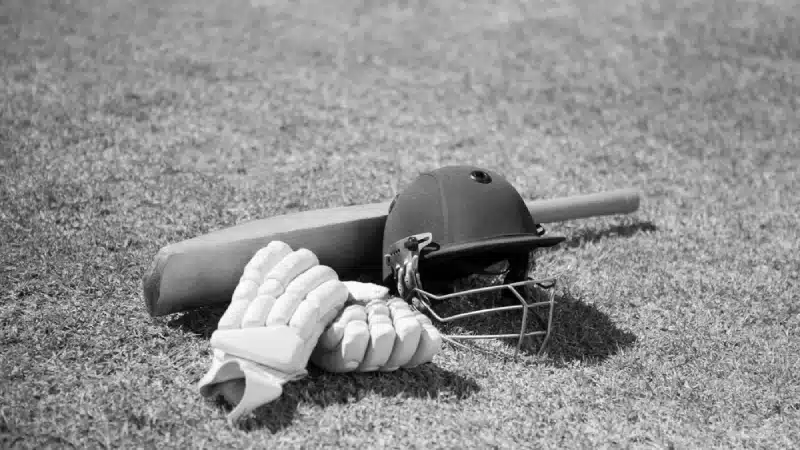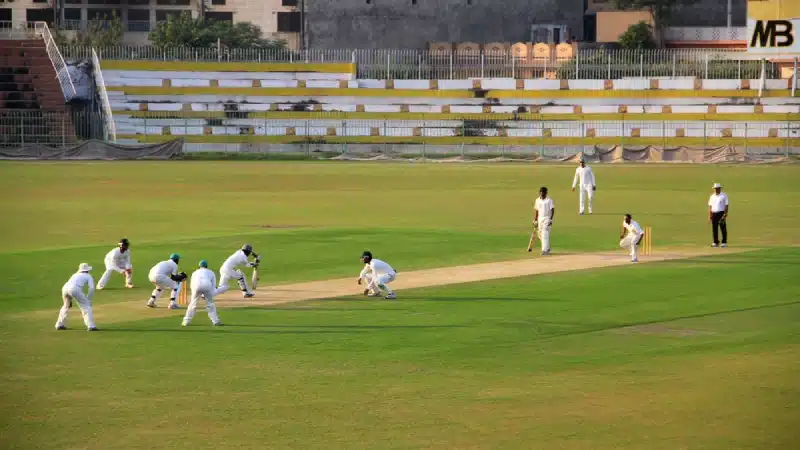
The follow-on is a rule in Test cricket that forces the team batting second to bat again immediately after their first innings has finished. In Tests, the follow-on can only be enforced if the team batting first achieves a first innings lead of at least 200 runs.
If the team batting second scores substantially fewer runs in response to the first batting team’s total, the captain of the team batting first must take a decision on whether to enforce the follow-on on the team batting second again or continue with the original order of play where they themselves bat their second innings.
Enforcing follow-ons reduce the probability of a drawn result by enabling the second team's second innings to be completed sooner.
Follow-ons generally occur in the form of cricket where a team gets to bat twice, notably domestic first-class cricket and international Test cricket. As per Law 14 in the MCC Laws of Cricket, there is a minimum lead required for a defending side to enforce a follow-on.
In a five-day match, a side which bats first and leads by at least 200 runs has the option to enforce a follow-on. In a three-day or a four-day match, a lead of at least 150 is a must and 100 if it’s a two-day match.
It is up to the discretion of the captain of the team who batted first to enforce the follow-on depending on various factors like pitch as well as weather conditions, the time remaining in a match and the strengths and weaknesses of the opposition.
Advantages of enforcing a follow-on in Test cricket
The main motive behind imposing a follow-on is to enforce a result and take the draw out of the equation by putting more pressure on the opposition since they have already posted a below-par score once.
It also has a major effect on the bowlers’ morale since they are entrusted with the responsibility of taking another 10 wickets with momentum on their side having only just gotten better of the opposition batsmen.
Taking such an approach also passes an aggressive message to the opposition and can be a psychological win of sorts by pushing them further on the backfoot having already been bundled out cheaply once.
Disadvantages of enforcing a follow-on in Test cricket
While there are a few disadvantages of enforcing a follow-on, perhaps the biggest one is the chances of bowlers tiring out after bowling one full innings. The bowlers might not be at their best in the second innings right away and that may allow the batting team to get a bit comfortable and put runs on the board.
Enforcing a follow-on also means that you will have to bat last which might not be a great decision at times considering the wear and tear of the pitches on the final few days of a Test. Widening cracks and a deteriorating surface assists the opposition bowlers more and batting last to win a Test match is often a difficult proposition.
One classic example of a team winning a match after being asked to follow-on is the famous 2001 India versus Australia Test in Eden Gardens, Kolkata where the hosts turned the tables on the Aussies and came back after being asked to follow-on to register a historic victory.
Such instances over the years have made captains rethink their strategy of enforcing the follow-on although being in a position to do so generally indicates which side is in control of the match.
Featured photo : Paul Ellis / AFP




















